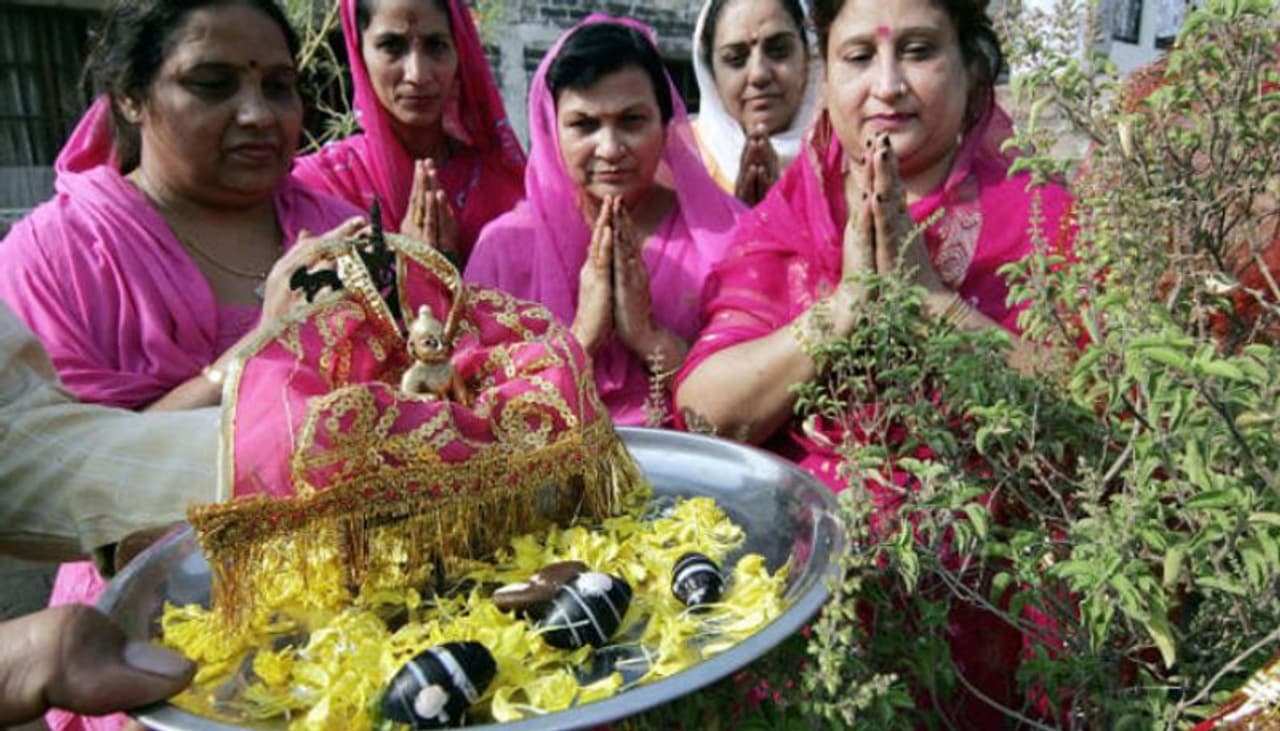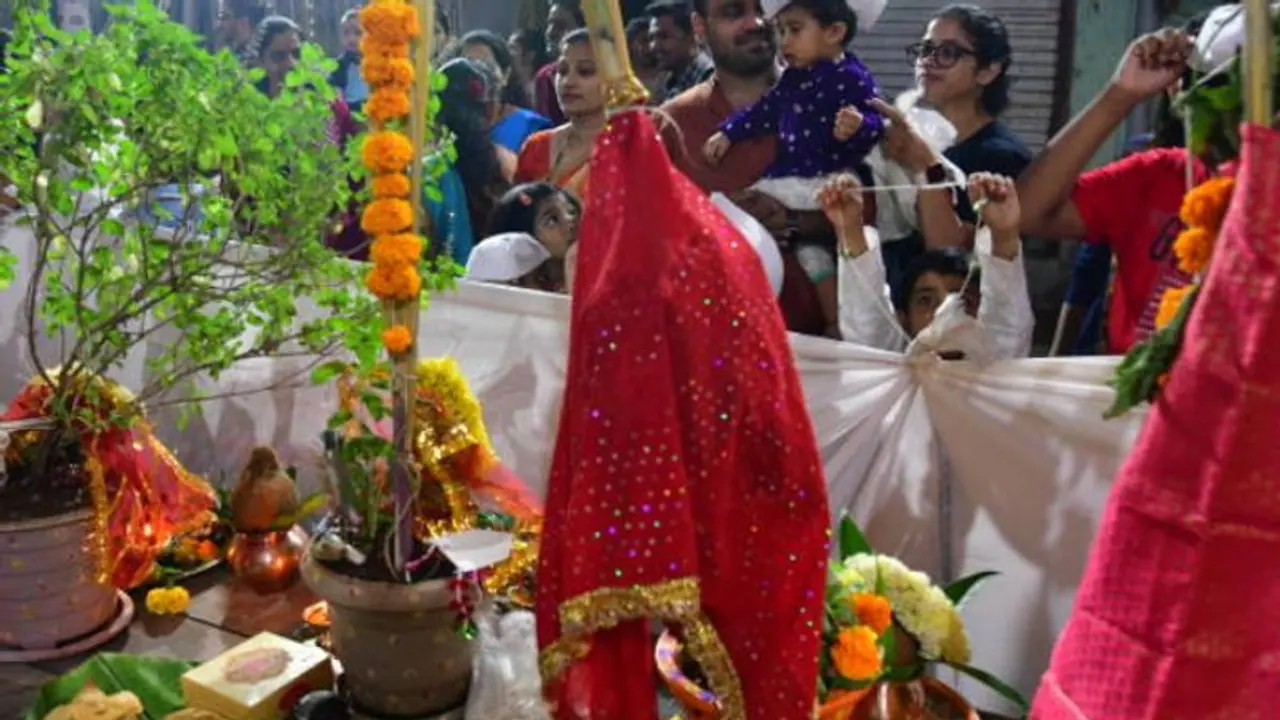The marriage of Tulsi to Lord Vishnu in his Shaligram form is a significant event in Hindu ritual and the ceremony is performed with great devotion. A devotee can rid themselves of all material suffering by simply worshipping her with devotion.
Tulsi Vivah, also known as Tulsi Puja or Tulasi Kalyanam, is a Hindu ceremonial wedding performed to celebrate the symbolic marriage of the holy basil plant, or Tulsi (Ocimum sanctum), to Lord Vishnu in his black stone form, the Shaligram. This ritual typically takes place on the twelfth day or Dwadashi of the bright fortnight of the Hindu month of Kartik (October–November). This year, the Tulsi Vivah falls on November 24.

Also read: Tulsi worship: How to worship Tulasi Devi to attain her blessings? Read HERE
History:
Tulasi Devi was the daughter of King Kushadvaja and the wife of the demon Jalandhar. As he was born in water, Jalandhar asserts its dominion over the ocean and seeks the 14 treasures that Vishnu's second incarnation removed from the ocean by churning. He makes a war declaration and puts the demigods at risk. More so due to a blessing that said he would not die unless his wife Vrinda remained chaste. She was so steadfast in her chastity that not even Lord Shiva could vanquish Jalandara in combat; instead, all the gods turned to Lord Vishnu for assistance.
As a final attempt to kill Jalandhar, Vishnu takes on the shape of Vrinda's spouse and lures her. In her rage, Vrinda curses Lord Vishnu and transforms him into a black stone (a salagram) as a result of his dishonesty. In addition, He bestowed upon Tulsai Devi the blessing that she would live with Him in Vaikuntha as His consort for all eternity. He declared that she would take on the form of a plant for the good of all, making it extremely fortunate for anyone engaging in devotional worship.
Vishnu promises to marry her annually on this day of Kartik. Their legend might be the source of the ammonite black stone, also known as Shaligram, which is found on the Gandaki River's bed. As a result, devotees of Krishna never present anything to him without a Tulasi leaf. He wears a Tulasi garland on a constant basis. The annual marriage season for devotees worldwide commences on this day, Tulasi Vivah.

Significance:
Tulasi leaves are very dear to the Supreme Personality of Godhead Lord Krishna. Since Tulasi Devi is a true devotee of Krishna, she deserves the same respect as all of Krishna's sincere devotees. A devotee can rid themselves of all material suffering by simply worshipping her with devotion. "A single one out of fifty-six offerings or thirty-six curries offered without a Tulasī leaf is not acceptable to the Lord."
Even Radharani's and the Spiritual Master's lotus feet cannot have Tulasi leaves placed upon them. It is exclusively meant to be placed on Krishna's lotus feet.
According to Skanda Puran, "Tulasi is auspicious in all respects. Simply by seeing, simply by touching, simply by remembering, simply by praying to, simply by bowing before, simply by hearing about, or simply by sowing the tree, there is always auspiciousness. Anyone who comes in touch with the Tulasi tree in the above-mentioned ways lives eternally in the Vaikuntha world."
How is Tulsi Vivah celebrated?
Tulasi's marriage to Vishnu/Krishna is similar to a customary Hindu marriage. The wedding ceremony takes place in houses and temples, where devotees fast until the ritual starts in the evening. The house's courtyard is surrounded by a mandapam, where a tulasi plant known as Tulasi Vrindavana is typically planted in the middle of the space. There is a belief that Vrinda's soul spends the night inside the plant and departs when dawn arrives.
Tulasi, the bride, is decked up with a sari and necklaces and jewels. Tulasi may have a human paper face with a nose ring and bindi attached to it. The groom is the shaligrama stone, which is a representation of Vishnu, or it could be a brass image or painting of Krishna, Balarama, or Vishnu. The image is wearing a dhoti. Before the wedding, Tulasi and Vishnu are both bathed and garlanded with flowers. During the ceremony, the transcendental couple is connected by a cotton thread known as a mala.
